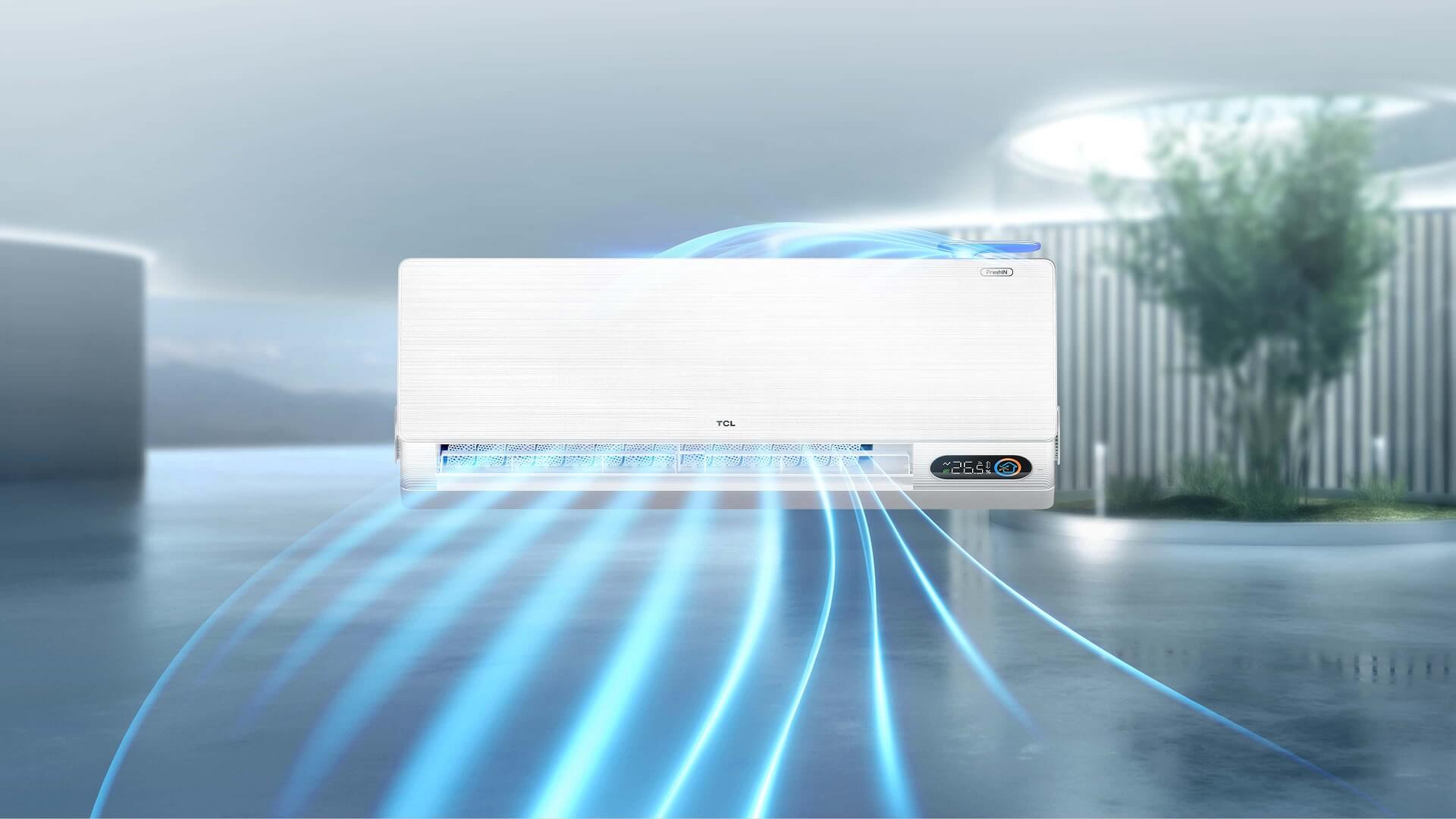Your Next Smart Phone: 5G vs 4G: What is the difference?
2023-04-03
Introduction
If you're in the market for a new phone, you've probably heard a lot about 5g. But what is it, exactly? And how does it differ from 4g? In this article, we explain everything you need to know about 5G vs 4G!
What are 5G and 4G?
4G, the fourth generation of mobile network technology, is the forerunner to 5G. In the 2010s, 4G was the most recent and innovative generation of cellular technology, reaching ubiquity within a decade.
5G is the fifth generation ( and the latest generation) of cellular network technology. 5G cellular networks are expected to provide higher data rates, lower latency, and many more connections than previous generations of cellular network technologies.
Frequency waves
Let's start by talking about how 5G and 4G are different in terms of frequency.
One critical difference is that 5G networks use unique radio frequencies to accomplish what 4G networks cannot. While some 5G networks use higher frequencies, such as those at 30 GHz or more, 4G uses frequencies below 6 GHz.
These high frequencies are beneficial for a variety of reasons, the most notable of which is that they support a large capacity for rapid data. They are not only less congested with existing cellular data and so can be used in the future for increased bandwidth demands, but they are also highly directional and can be used directly next to other wireless signals without causing interference.
This is significantly different from 4G towers, which might possibly waste energy and power by beaming radio waves at places where people aren't even trying to access the internet.
In short, 5G networks can broadcast ultrafast data to a lot more users, with high precision.
Speed
Theoretically speaking, 5G will be much faster than 4G. Under ideal conditions, 5G download rates can exceed 10 gigabits per second. That's up to 100 times quicker than 4G, and it's unquestionably the level of performance required for an increasingly connected society.
Even now, with 5G technology still in its early stages of development, speeds are lightning fast. This speed and capacity are important because they enable new applications and services that weren't possible before.
For example, TCL 30 5G smartphone speed up to 2.69 Gbps⁴, allowing a movie to be downloaded within minutes. This takes, on average, 50 minutes on a 4G network.
Latency
Latency refers to how long it takes for your signal from your device (e.g., computer or smartphone) to reach its destination (e.g., website server). With low latency rates of around 20 milliseconds (ms) or less between sending an electronic message and receiving confirmation that it has been delivered successfully without errors along the way; high latency rates increase risk factors such as connection drops while gaming online or chatting with friends through video calling apps such as FaceTime or Skype where accuracy matters most.
Latency for 4G is on average 200 milliseconds, which is close to the 250 milliseconds it takes humans to respond to visual stimuli. However, 5G latency is substantially lower: only 1 millisecond.
This huge leap will be critical in the development of new services and devices.
Connectivity Capacity
4G occasionally has trouble supporting a large number of devices in one place. This is something that some of us have encountered while attempting to use our phones during crowded sporting events or concerts. By intelligently broadcasting to each device with great precision, 5G resolves this problem and can support up to 1 million devices per square kilometer.
This precision decreases noise in 5G, making it easier to connect multiple devices. Given the growth in the number of network-connected devices each year, the capacity to connect additional devices is crucial.
According to the 2021 Ericsson Mobility Report, 5G will account for over half of all mobile subscriptions by 2027, when total subscriptions are estimated to reach 4.4 billion. This is an increase from an anticipated 660 million last year. By the end of 2020, 4G had reached more than 80% of the world's population.
Should you buy a 5G phone or a 4G phone in 2023
If you're in the market for a new phone right now, you will notice that since the first 5G smartphones were introduced in 2019, 5G phones are now more widely available and more affordable.
Now, what we should take into consideration is whether your operator supports 5G networks and offers 5G packages. If so, whether your area has 5G network coverage or plans to cover it in the future.
5G phones will be more advanced than their 4G phones, which means they offer better performance (for example, faster download speeds). The downside? They also tend to come with a higher price tag due to the extra features included in their design—and if you want your device to work seamlessly when connected through a 5G network then it's worth paying extra for one of these devices.
5G phones can use both 4G and 5G technology, this will allow you access to 4G network coverage regardless of where you go in your country whereas only certain cities currently have access to 5G service from either company or any other provider using its own private network.
Check out TCL's 5G smartphones and 4G mobiles if you want to experience the new technology and maximize your entertainment!
Connect with us on Facebook, Instagram, Tik Tok & YouTube for the latest updates on our TCL products and events.
If you're in the market for a new phone, you've probably heard a lot about 5g. But what is it, exactly? And how does it differ from 4g? In this article, we explain everything you need to know about 5G vs 4G!
4G, the fourth generation of mobile network technology, is the forerunner to 5G. In the 2010s, 4G was the most recent and innovative generation of cellular technology, reaching ubiquity within a decade.
5G is the fifth generation ( and the latest generation) of cellular network technology. 5G cellular networks are expected to provide higher data rates, lower latency, and many more connections than previous generations of cellular network technologies.
Let's start by talking about how 5G and 4G are different in terms of frequency.
One critical difference is that 5G networks use unique radio frequencies to accomplish what 4G networks cannot. While some 5G networks use higher frequencies, such as those at 30 GHz or more, 4G uses frequencies below 6 GHz.
These high frequencies are beneficial for a variety of reasons, the most notable of which is that they support a large capacity for rapid data. They are not only less congested with existing cellular data and so can be used in the future for increased bandwidth demands, but they are also highly directional and can be used directly next to other wireless signals without causing interference.
This is significantly different from 4G towers, which might possibly waste energy and power by beaming radio waves at places where people aren't even trying to access the internet.
In short, 5G networks can broadcast ultrafast data to a lot more users, with high precision.
Theoretically speaking, 5G will be much faster than 4G. Under ideal conditions, 5G download rates can exceed 10 gigabits per second. That's up to 100 times quicker than 4G, and it's unquestionably the level of performance required for an increasingly connected society.
Even now, with 5G technology still in its early stages of development, speeds are lightning fast. This speed and capacity are important because they enable new applications and services that weren't possible before.
For example, TCL 30 5G smartphone speed up to 2.69 Gbps⁴, allowing a movie to be downloaded within minutes. This takes, on average, 50 minutes on a 4G network.
Latency refers to how long it takes for your signal from your device (e.g., computer or smartphone) to reach its destination (e.g., website server). With low latency rates of around 20 milliseconds (ms) or less between sending an electronic message and receiving confirmation that it has been delivered successfully without errors along the way; high latency rates increase risk factors such as connection drops while gaming online or chatting with friends through video calling apps such as FaceTime or Skype where accuracy matters most.
Latency for 4G is on average 200 milliseconds, which is close to the 250 milliseconds it takes humans to respond to visual stimuli. However, 5G latency is substantially lower: only 1 millisecond.
This huge leap will be critical in the development of new services and devices.
4G occasionally has trouble supporting a large number of devices in one place. This is something that some of us have encountered while attempting to use our phones during crowded sporting events or concerts. By intelligently broadcasting to each device with great precision, 5G resolves this problem and can support up to 1 million devices per square kilometer.
This precision decreases noise in 5G, making it easier to connect multiple devices. Given the growth in the number of network-connected devices each year, the capacity to connect additional devices is crucial.
According to the 2021 Ericsson Mobility Report, 5G will account for over half of all mobile subscriptions by 2027, when total subscriptions are estimated to reach 4.4 billion. This is an increase from an anticipated 660 million last year. By the end of 2020, 4G had reached more than 80% of the world's population.
If you're in the market for a new phone right now, you will notice that since the first 5G smartphones were introduced in 2019, 5G phones are now more widely available and more affordable.
Now, what we should take into consideration is whether your operator supports 5G networks and offers 5G packages. If so, whether your area has 5G network coverage or plans to cover it in the future.
5G phones will be more advanced than their 4G phones, which means they offer better performance (for example, faster download speeds). The downside? They also tend to come with a higher price tag due to the extra features included in their design—and if you want your device to work seamlessly when connected through a 5G network then it's worth paying extra for one of these devices.
5G phones can use both 4G and 5G technology, this will allow you access to 4G network coverage regardless of where you go in your country whereas only certain cities currently have access to 5G service from either company or any other provider using its own private network.
Check out TCL's 5G smartphones and 4G mobiles if you want to experience the new technology and maximize your entertainment!
Connect with us on Facebook, Instagram, Twitter & YouTube for the latest updates on our TCL products and events.
2023-04-03

HDR vs 4K: What's the difference?
2025-08-28

How to Choose the Right Washing Machine Size
2025-07-31

QLED vs. UHD: Which TV Technology is Best?
2025-02-25

How to Connect Universal Remote to TV?
2024-08-27

YouTube on TV Not Working, How to Fix?
2024-08-24

How to Watch Apple TV on Smart TV
2024-08-22

How to Measure a TV Screen for Perfect Fit?
2024-07-26

How to Clean Air Conditioner Drain Line?
2024-06-27

Set Up Your OK Google Device On Your TV
2024-06-18

What AC Type is Used in Offices?
2024-04-26

How To Remove Lint From Clothes Washing Tips
2024-04-20

How to Reset Your Air Conditioning Unit
2024-03-26

How Does The Refrigeration Cycle Work?
2024-03-23

How Does VPN Work On Smart TV
2024-03-22

How to Open A Locked Washing Machine Door
2024-03-19

Discover the Best Washing Machines for 2024
2024-02-28

How To Get Disney Plus On TV: A Easy Guide
2024-02-25

How To Adjust Your TV Picture to Fit Screen
2024-01-21

How To Convert Your LED TV To A Smart TV
2023-11-30

Tablet Vs Laptop – Which Should You Buy?
2023-11-24

How To Play Games On Smart TV
2023-11-16

What is a backlight in an LED TV?
2023-11-14

How To Level A Washing Machine in Easy Steps
2023-11-11

Who Invented Television: History of TV
2023-06-28

How to Watch Free Live TV on Android TV
2023-05-24

Top 5 Best Browsers for Android TV
2023-05-20

How to Recover Deleted Photos on Android
2023-05-18

What Are the Big Changes for TCL TV in 2022?
2022-09-08

How TCL Smart TVs Enhance Your Life?
2022-08-10

What is the Best TV viewing distance?
2022-04-13

4 Misunderstandings About QLED TVs
2022-04-13

How to use your TCL Android TV
2019-11-07

Which TV Should You Buy
2018-07-06

Google Assistant & Artificial Intelligence
2018-05-23

TCL Named CES 2018 Innovation Awards Honoree
2018-01-31

Voice Control & Multimedia With TCL
2017-10-09

EISA Awards | TCL Wins Best Buy TV 2017-2018
2017-09-26

Which Size TCL TV Is Best for You?
2017-06-08
Copyright © 2025 TCL. All Rights Reserved. TCL SMART DEVICE (MALAYSIA) SDN. BHD. 201001040445 (924370-D).
This site uses cookies to analyse site traffic, improve your experience and personalize ads or other contents. By clicking Accept or continuing to browse the site, you are agree to our use of cookies. See our Cookies Policy here. Learn more

























































































































.jpg)
























































































